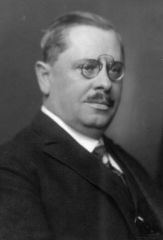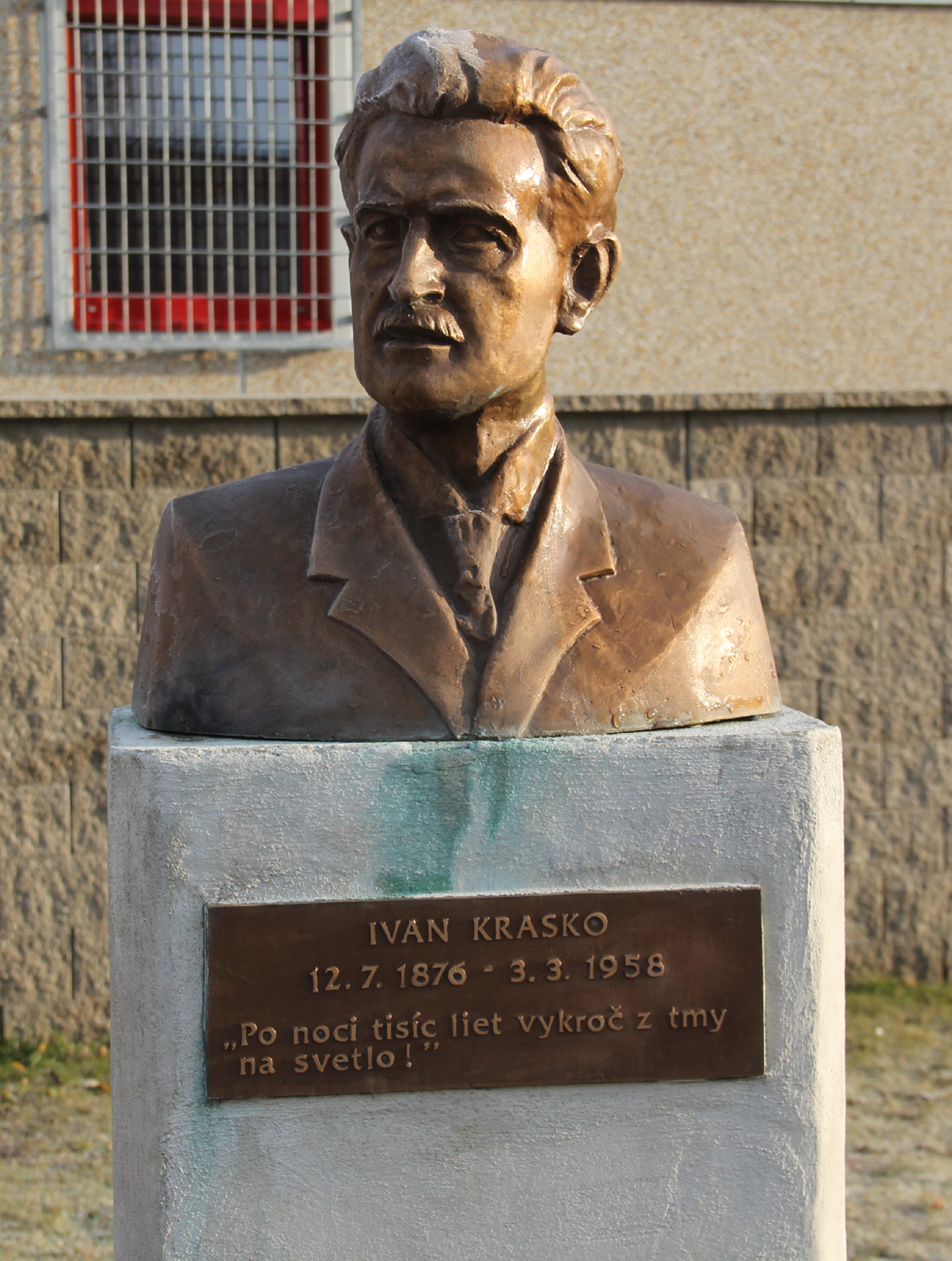|
Klobuky
Klobuky is a municipality and village in Kladno District in the Central Bohemian Region of the Czech Republic. It has about 1,000 inhabitants. Administrative parts Villages of Čeradice, Kobylníky, Kokovice and Páleček are administrative parts of Klobuky. Etymology The name of the village was probably derived from its ancient owner or founder named ''Klobuk'' or ''Klobouk'' (which is also the Czech word for "hat", in old Czech also for "helmet"). Hence the helmet is in the coat of arms. Geography Klobuky lies about northwest of Kladno and northwest of Prague. It is located in a flat agricultural landscape of the Lower Ohře Table. History The first written mention of Klobuky is from 1226, when it was a property of the Doksany convent. Demographics Sights The major local sight is an alleged prehistoric menhir, with a height of the tallest in the Czech Republic. It is an upright, lonely standing stone called ''Kamenný pastýř'' ("stone shepherd") or ''Kamenný muž'' (" ... [...More Info...] [...Related Items...] OR: [Wikipedia] [Google] [Baidu] |
Jan Malypetr
Jan Malypetr (21 December 1873 in Klobuky – 27 September 1947 in Slaný) was a Czechoslovak politician. As prime minister during the Great Depression he strong-armed Czechoslovakia into a more rapid economic recovery than elsewhere in Europe. A member of the Agrarian Party, he was the minister of Interior, and chairman of the Chamber of Deputies from 17 December 1925 to 29 October 1932 and again from 5 November 1935 to 1939. Malypetr served three terms as prime minister of Czechoslovakia: * 29 October 1932 – 14 February 1934 * 14 February 1934 – 4 June 1935 * 4 June 1935 – 5 November 1935 Early life Jan Malypetr came from landed gentry in the German speaking part of Bohemia. After attending high school and business school in Kadaň, he worked on his parents' estate, which was called ''u Sakulínů''. He also became the president of the local sugar beet cooperative refinery. In 1899 Malypetr joined the Agrarian Party and in 1906 became a member of its executiv ... [...More Info...] [...Related Items...] OR: [Wikipedia] [Google] [Baidu] |
Kladno District
Kladno District ( cs, okres Kladno) is a district (''okres'') within the Central Bohemian Region of the Czech Republic. The capital of the district is the city of Kladno. List of municipalities Běleč - Běloky - Beřovice - Bílichov - Blevice - Brandýsek - Braškov - Bratronice - Buštěhrad - Černuc - Chržín - Cvrčovice - Doksy - Dolany - Drnek - Družec - Dřetovice - Dřínov - Hobšovice - Horní Bezděkov - Hořešovice - Hořešovičky - Hospozín - Hostouň - Hradečno - Hrdlív - Hřebeč - Jarpice - Jedomělice - Jemníky - Kačice - Kamenné Žehrovice - Kamenný Most - Kladno - Klobuky - Kmetiněves - Knovíz - Koleč - Královice - Kutrovice - Kvílice - Kyšice - Lány - Ledce - Lhota - Libochovičky - Libovice - Libušín - Lidice - Líský - Loucká - Makotřasy - Malé Kyšice - Malé Přítočno - Malíkovice - Neprobylice - Neuměřice - Otvovice - Páleč - Pavlov - Pchery - Pletený Újez ... [...More Info...] [...Related Items...] OR: [Wikipedia] [Google] [Baidu] |
Ivan Krasko
Ivan Krasko (real name Ján Botto, pseudonyms ''Bohdana J. Potokinová'', ''Ivan Krasko'', ''Janko Cigáň'', 12 July 1876 in Lukovištia (''Lukovistye'') – 3 March 1958 in Bratislava) was a Slovak poet, translator and representative of modernism in Slovakia. Biography He was born into a peasant family in Lukovištia, a village in the Gemer (Gömör) region. He studied at the Hungarian grammar school in Rimavská Sobota (Rimaszombat), later at German grammar schools in Sibiu and Braşov, where he graduated. In 1900 he applied for the study of chemical engineering in Prague, where he successfully graduated in 1905. He was a member of the Slovak association Detvan. He worked then for some time as a chemist in the town of Klobuky, later in a chemical factory in Slaný. When the First World War broke out, he went to fight on the Eastern Front against the Russian Empire. After end of the war, he returned to Czechoslovakia and started working as a politician, becoming a member ... [...More Info...] [...Related Items...] OR: [Wikipedia] [Google] [Baidu] |
Obec
Obec (plural: ''obce'') is the Czech and Slovak word for a municipality (in the Czech Republic, in Slovakia and abroad). The literal meaning of the word is "commune" or "community". It is the smallest administrative unit that is governed by elected representatives. Cities and towns are also municipalities. Definition Legal definition (according to the Czech code of law with similar definition in the Slovak code of law) is: ''"The municipality is a basic territorial self-governing community of citizens; it forms a territorial unit, which is defined by the boundary of the municipality."'' Every municipality is composed of one or more cadastral areas. Every municipality is composed of one or more administrative parts, usually called town parts or villages. A municipality can have its own flag and coat of arms. Czech Republic Almost whole area of the republic is divided into municipalities, with the only exception being military training areas. The smaller municipalities consist ... [...More Info...] [...Related Items...] OR: [Wikipedia] [Google] [Baidu] |
Prague
Prague ( ; cs, Praha ; german: Prag, ; la, Praga) is the capital and largest city in the Czech Republic, and the historical capital of Bohemia. On the Vltava river, Prague is home to about 1.3 million people. The city has a temperate oceanic climate, with relatively warm summers and chilly winters. Prague is a political, cultural, and economic hub of central Europe, with a rich history and Romanesque, Gothic, Renaissance and Baroque architectures. It was the capital of the Kingdom of Bohemia and residence of several Holy Roman Emperors, most notably Charles IV (r. 1346–1378). It was an important city to the Habsburg monarchy and Austro-Hungarian Empire. The city played major roles in the Bohemian and the Protestant Reformations, the Thirty Years' War and in 20th-century history as the capital of Czechoslovakia between the World Wars and the post-war Communist era. Prague is home to a number of well-known cultural attractions, many of which survived ... [...More Info...] [...Related Items...] OR: [Wikipedia] [Google] [Baidu] |
Sugar Refinery
A sugar refinery is a refinery which processes raw sugar from cane or beets into white refined sugar. Many cane sugar mills produce raw sugar, which is sugar that still contains molasses, giving it more colour (and impurities) than the white sugar which is normally consumed in households and used as an ingredient in soft drinks and foods. While cane sugar does not need refining to be palatable, sugar from sugar beet is almost always refined to remove the strong, usually unwanted, taste of beets from it. The refined sugar produced is more than 99 percent pure sucrose. Many sugar mills only operate during the harvest season, whereas refineries may work the year round. Sugar beet refineries tend to have shorter periods when they process beet than cane refineries, but may store intermediate product and process it in the off-season. Raw sugar is either processed and sold locally, or is exported and refined elsewhere. History Sugar refineries date back to Arab Egypt in t ... [...More Info...] [...Related Items...] OR: [Wikipedia] [Google] [Baidu] |
Jindřich Šimon Baar
Jindřich Šimon Baar (7 February 1869, Klenčí pod Čerchovem – 24 October 1925, Klenčí pod Čerchovem) was a Czech Catholic priest and writer, realist, author of the so-called ''country prose''. He joined the Czech ''Catholic modern style'', but later severed the ties with that movement. As writer, he emphasized traditional moral values of the countryside. Born into a peasant family, he did religious studies and was ordained as a Catholic priest in 1892. As a priest, he strived, unsuccessfully, for reforms in the church. Works Among his novels are: * ''Cestou křížovou'' (1900) – the first fruit, autobiographic description of the uneasy life as a reform priest * ''Pro kravičku'' (1905) * ''Farská panička'' (1906) * ''Farské historky'' (1908) * ''Jan Cimbura'' (1908) – highly idealized depiction of peasant life * historical trilogy: ''Paní komisarka'' (1923), ''Osmačtyřicátníci'' (1924) and ''Lůsy'' (1925) He also published several short stories and co ... [...More Info...] [...Related Items...] OR: [Wikipedia] [Google] [Baidu] |
Menhir
A menhir (from Brittonic languages: ''maen'' or ''men'', "stone" and ''hir'' or ''hîr'', "long"), standing stone, orthostat, or lith is a large human-made upright stone, typically dating from the European middle Bronze Age. They can be found individually as monoliths, or as part of a group of similar stones. Menhirs' size can vary considerably, but they often taper toward the top. They are widely distributed across Europe, Africa and Asia, but are most numerous in Western Europe; particularly in Ireland, Great Britain, and Brittany, where there are about 50,000 examples, and northwestern France, where there are some 1,200 further examples. Standing stones are usually difficult to date. They were constructed during many different periods across pre-history as part of the larger megalithic cultures in Europe and near areas. Some menhirs stand next to buildings that have an early or current religious significance. One example is the South Zeal Menhir in Devon, which formed ... [...More Info...] [...Related Items...] OR: [Wikipedia] [Google] [Baidu] |
Doksany
Doksany (german: Doxan) is a municipality and village in Litoměřice District in the Ústí nad Labem Region of the Czech Republic. It has about 400 inhabitants. History The oldest settlement dates back between 4500 and 2500 BC. In 1993, archaeologists discovered more ancient buildings and settlements that dated back to the same period of time. The first written mention of Doksany is from 1151 by chronicler Vincencius, who wrote about the Doksany convent. It was probably founded in 1144 by Gertrude of Babenberg and Vladislaus II as the second convent in the kingdom. Geography Doksany is located about south of Litoměřice, south of Ústí nad Labem, and northwest of Prague. It lies in a flat agricultural landscape of the Lower Eger Table. It lies on the right bank of the Ohře river, which forms the western municipal border. Climate During the June 2019 European heat wave, Doksany broke the record for the hottest temperature in June in the Czech Republic. The Czech Hydro ... [...More Info...] [...Related Items...] OR: [Wikipedia] [Google] [Baidu] |
Lower Ohře Table
{{Disambiguation ...
Lower may refer to: *Lower (surname) *Lower Township, New Jersey *Lower Receiver (firearms) *Lower Wick Gloucestershire, England See also *Nizhny Nizhny (russian: Ни́жний; masculine), Nizhnyaya (; feminine), or Nizhneye (russian: Ни́жнее; neuter), literally meaning "lower", is the name of several Russian localities. It may refer to: * Nizhny Novgorod, a Russian city colloquial ... [...More Info...] [...Related Items...] OR: [Wikipedia] [Google] [Baidu] |
Kladno
Kladno (; german: Kladen) is a city in the Central Bohemian Region of the Czech Republic. It has about 67,000 inhabitants. It is the largest city in the region and together with its adjacent suburban areas has a population of more than 110,000. Administrative parts The city is made up of six administrative parts: Kladno, Dubí, Kročehlavy, Rozdělov, Švermov and Vrapice. Geography Kladno is located about northwest of Prague and is a part of the Prague metropolitan area. It lies in a mostly flat landscape of the Prague Plateau. The highest point is at above sea level. History The first written mention of Kladno is from 1318 as a property of noble family of Kladenský of Kladno. After 1543, when Kladenský of Kladno died out, it became a property of Žďárský of Žďár. In 1561 the town rights were secured. In 1566, Žďárský of Žďár rebuilt the local fort to a Renaissance castle. The town walls was built in following decades. The city prospered until Battle of Whi ... [...More Info...] [...Related Items...] OR: [Wikipedia] [Google] [Baidu] |






